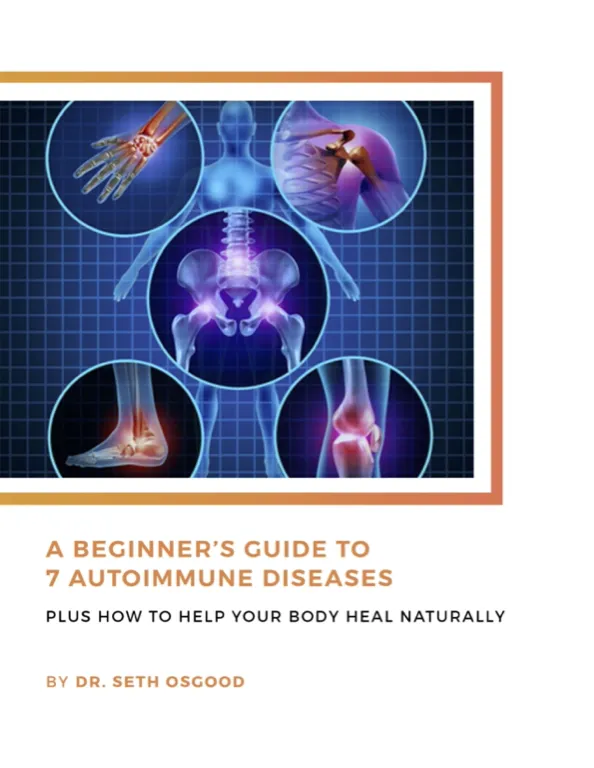We are closing out our Autoimmune series by exploring another highly effective but little-known treatment for autoimmune disease – hyperbaric oxygen therapy (HBOT)!
HBOT has been used for decades in Europe with impressive results, yet it’s applied in a very limited capacity here in the US. Fortunately, as more patients seek out safer and more effective alternatives to pharmaceutical drugs, it’s slowly gaining traction.
This week we’ll look at what it is, how it can help stop autoimmune disease progression and repair tissue damage, and what to expect during HBOT sessions!
What is Hyperbaric Oxygen Therapy (HBOT)?
At normal pressure, we breathe in air that is 21% oxygen. This oxygen saturates your red blood cells (RBCs), which travel around your body and deliver it to tissue. The oxygen helps stimulate the release of growth factors, stem cells, and other substances needed for healing.
Hyperbaric oxygen therapy (HBOT) is the practice of breathing concentrated oxygen in a pressurized chamber. The increased pressure allows the oxygen to penetrate both RBCs and plasma, improving oxygenation throughout the body.
This stimulates the growth of new tissue, stem cells, and blood vessels, while enhancing immune function and acting as a powerful anti-inflammatory throughout the body.
How Hyperbaric Oxygen Therapy (HBOT) Can Help Autoimmune Patients
In autoimmune disease the immune system has become stressed and is mistakenly attacking your body’s own tissues, causing damage and inflammation. HBOT can help regulate immune function and repair the damage caused by the attacks.
1. Reduces Inflammation
Chronic inflammation is a primary driver of every chronic illness, including autoimmune disease, cancer, heart disease, and others. One of the most profound benefits of HBOT is its reduction in inflammation and inflammatory markers (including TNF-alfa and Interleukin-1). Perhaps most exciting is the fact that it can dramatically decrease both acute and chronic inflammation. This gives it enormous potential to both prevent and help reverse autoimmune conditions.
HBOT has been specifically found to improve Crohn’s disease, lower inflammatory markers in the brain, and reduce the buildup of plaques in the arteries.
2. Normalizes Immune Function
A common misconception about autoimmune disease is that because your immune system is attacking you, it needs to be suppressed. In fact, the conventional approach to autoimmunity is based largely on giving patients immunosuppressive drugs with risky side effects. Rather than weakening immune function and leaving patients vulnerable to infections and illness, hyperbaric oxygen therapy is an immune system normalizer.
It helps correct dysregulated immune function by speeding apoptosis (programmed cell death) in older and dysfunctional immune cells, while also supporting immune function against infections and oxidative stress.
3. Helps Treat Chronic Infections
As we discussed in last week’s article on Low-Dose Immunotherapy, many autoimmune attacks are triggered by chronic infections such as Lyme and other tick-borne illnesses. Your immune system combats these infections by sending white blood cells (WBCs) to surround and kill the pathogens by converting oxygen into compounds known as oxy-radicals.
Increasing oxygenation provides more fuel for your WBCs and helps them better destroy pathogens. Research shows it is particularly effective for chronic Lyme disease.
4. Increases Antioxidants
Antioxidants are your body’s natural defense against oxidative stress from toxins, a poor diet, and aging. Many people today are suffering from high levels of oxidative stress due to the overwhelming number of toxins in our modern environment and the Standard American Diet. High oxidative stress causes damage to cells, proteins, and DNA and increases the demand for antioxidants.
HBOT has been shown to provide a sharp rise in endogenous antioxidant activity (the antioxidants produced naturally by your body). In particular, Glutathione peroxidase, catalase, and Superoxide Dismutase have all been shown to rise intracellularly following HBOT treatments. It has also been found to promote healthy aging, reduce liver damage, and play a protective role in Alzheimer’s Disease.
What are HBOT Treatments Like?
There are a few options when it comes to HBOT. There is hospital-grade HBOT where you sit in a hard-sided chamber pressurized to three times the atmospheric pressure at sea level and receive 100% oxygen. These treatments are highly expensive and are usually used for acute cases of decompression sickness, carbon monoxide poisoning, gangrene, and non-healing wounds.
Mild HBOT provides 1.3 ATA (meaning a 30% increase in pressure compared to sea level). This elevates tissue oxygenation by more than 50% and provides significant medical benefits without the potential hazards of hospital-grade hyperbaric chambers. This is the form of HBOT we offer at GrassRoots’s New Hampshire clinic.
Some patients may also choose to purchase their own at-home mild hyperbaric oxygen therapy chamber if they are treating severe MS, a brain injury, cognitive decline, or other complex neurological conditions.
For each HBOT session, you sit inside the chamber with your regular clothes on and can read a book, use an electronic device, meditate or even nap. As the chamber pressurizes and depressurizes, you’ll likely experience pressure in your ears, similar to taking off and landing in a plane.
As with changing your diet or working out, you don’t use hyperbaric oxygen therapy once and see a transformation. Most patients make gradual progress over time before reaching a breakthrough and seeing a dramatic improvement in symptoms. Generally speaking, patients see changes in tissue and immune function after 20-30 sessions.
If you’d like to learn more about HBOT and if it may be beneficial to you, view our HBOT services page here and book an initial consultation.
About the Author: Dr. Seth Osgood is a Doctor of Nursing Practice, Board Certified Family Nurse Practitioner and Institute of Functional Medicine (IFM) Certified Practitioner. Dr. Osgood received his post-graduate training in Functional Medicine through the IFM and from working with Dr. Amy Myers. He has helped people from around the world improve their health utilizing a Functional Medicine approach.





